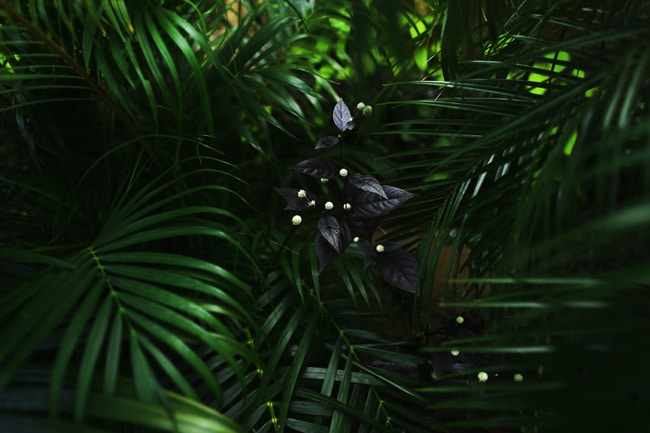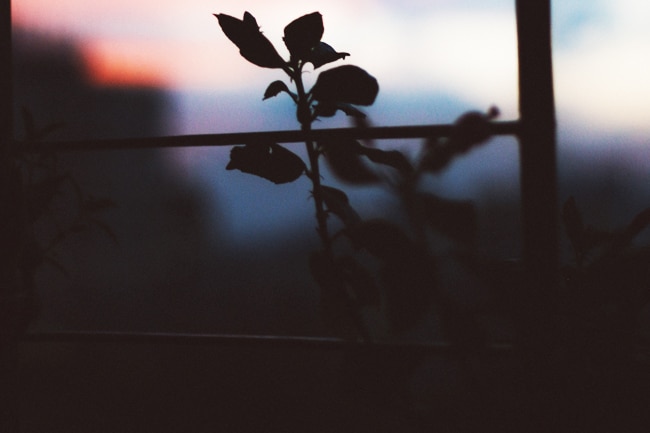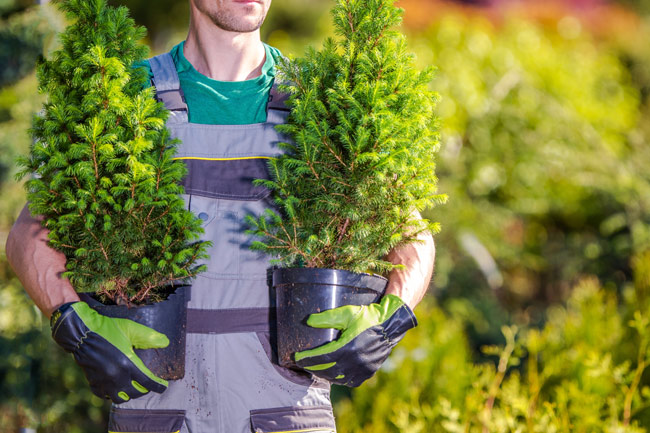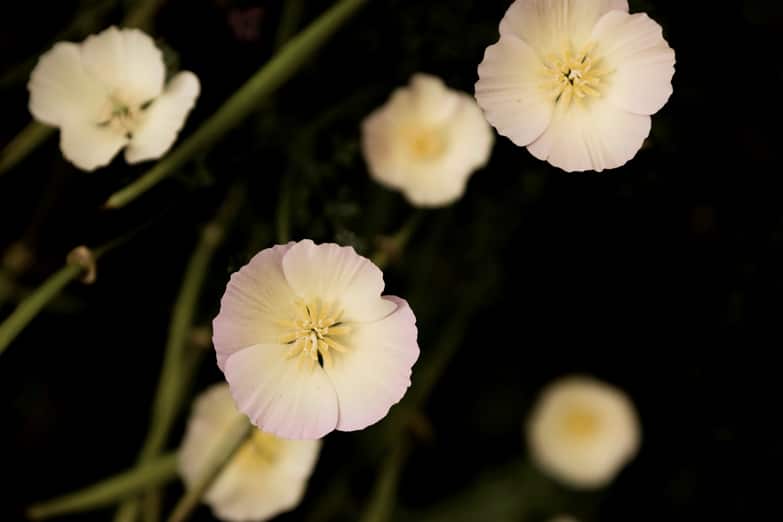Most people are somewhat familiar with what it takes to make a plant grow. A good source of light is deemed pretty much essential. But does that mean the plant stops growing when the sun goes down? What happens to the energy created during the day? Do plants grow at night?
Do Plants Grow At Night? Yes! The absence of light actually stimulates plants to grow fastest at night. Plant phytochromes detect darkness, encouraging growth hormone production, causing the plant to elongate in search of light. The same process helps plants orientate their foliage to light and helps seedlings stretch in search of light.
To learn more about what your plants are doing at night, read on!
Do Plants Grow At Night?
Let’s start with what we know: plants use sunlight for photosynthesis. When sunlight hits the leaves, it activates tiny chloroplasts in the plant cells. Chlorophyll within the chloroplasts of the cells act almost as miniature solar panels, collecting and storing the energy from the sunlight.
They use this energy to convert carbon dioxide and water into glucose and oxygen. The oxygen is released into the air as a waste product while the remaining energy-rich glucose can be used for sustenance and growth or stored in roots, leaves, or fruits for later use.
Plants use the sunlight provided during the day to their advantage and make as much food as possible, storing the excess. So, photosynthesis continues as long as there is enough water and light available.
There are a lot of other things going on during photosynthesis that I’m not going to get into, but this explanation is enough to understand what happens to plant growth after sunset.
Plants don’t sleep which means they don’t really shut down at night. When the sun goes down or the lights are turned off, plants are unable to continue photosynthesizing, but they are able to continue respiration, which is the process by which living organisms convert nutrients into energy for biological functions and growth.
What Is Respiration?

Respiration allows a plant to utilize the glucose that they have made through photosynthesis. Oxygen and glucose are used for respiration, producing carbon dioxide and water, releasing energy in the process.
A crucial thing to realize is that plants use oxygen all the time, day and night for respiration, utilising energy for essential functions and growth. Most people believe that plants don’t use oxygen during the day, but this is inaccurate. The reality is that plants use more carbon dioxide than oxygen by day, and more oxygen than carbon dioxide at night. Overall, plants are producers of oxygen and consumers of carbon dioxide.
Why Does A Plant Need Respiration?
Relocating and reusing the resources produced by photosynthesis is necessary for the growth of new cells and therefore new leaves, stems, and roots. For plants to grow bigger are stronger, they have to eat, just like humans do.
Moving all that food where it needs to go isn’t the whole story. Believe it or not, plants have a rather noticeable growth spurt just before dawn as any time-lapse photographer could tell you. This growth spurt boils down to an idea called rhythmic plant growth which is comparable to the circadian rhythm that humans experience.
For those who are unfamiliar with this concept, it occurs when the hypothalamus in the brain responds to the signals coming in through our optic nerves when it’s nighttime. These signals tell the hypothalamus that it’s dark outside so it must be night and time to rest. Your brain responds by producing melatonin from the pineal gland to make you drowsy.
Your circadian rhythm usually coincides with the natural day and night cycle, setting up a natural routine of sleeping at night and being alert during the day. Believe it or not, a routine like this can be seen in both humans and plants.
Plant Growth Spurts

Do plants grow at night? Not only do they grow, but their growth is supercharged!
A team of biologists from the Salk Institute for Biological Studies, UC San Diego, and Oregon State University wanted to prove that plants grow quickest just before dawn and that this growth occurs in spurts that far surpass the rate of growth at other times of day.
They set out to do this by trying to figure out how hormone biosynthesis correlates to rhythmic plant growth.
To accomplish this, they first looked at plant phytochromes which detect the amount of shade the plant is receiving. If the plant is receiving too much shade, growth hormones are sent to elongate the shaded part of the plant thus increasing the chances that the plant will reach more sunlight.
If you’ve ever left anything on your lawn, you may have noticed that the grass surrounding it grew longer than the other grass. If you thought your yard was fighting back against you, you’re right. This process is integral for plant survival, but what triggers their release?
Scientists discovered that the genes required to release these growth hormones just before dawn have a DNA sequence in common. They named this master controller the HUD element which stands for “hormone up at dawn”.
It controls the gates that release growth hormones, opening them at just the right time to flood the edges and stimulate that pre-dawn growth spurt then closing the gates until the next 24-hour cycle is completed. They also believe that the HUD element has a protein that attaches to regulate its function but this still remains a mystery.
Long-Day Versus Short-Day Plants
If you have ever seen plants classified as short-day or long-day, it’s because of what is happening in the plant at night. This classification is determined by photoperiodism or the amount of daylight or darkness a plant needs to grow.
It was previously believed that the day length was the crucial factor in this process, hence the terminology. As was later discovered, it is actually the duration of darkness that is crucial in triggering flowering in long-day and short-day plants.
Short-day plants require more than 12 hours of darkness for several weeks to bloom. They bloom in the winter or spring because this coincides with shorter days and longer nights.
If you’ve ever tried to get a poinsettia or kalanchoe to rebloom without success, it is very likely to have been due to their requirement for a prolonged period of long nights to trigger the blooming process.
Long-day plants need less than 12 hours of darkness to bloom. They bloom in the summer when the days are long. Many vegetables and summer blooming flowers are long-day plants, hence why we enjoy their blooms during the long days of summer.
Some plants are unaffected by day length. These are called day-neutral plants. Examples include cucumbers, tomatoes and corn.
Short- and long-day plants are split even further into quantitative and qualitative plants. These plants need a certain amount of sunlight or darkness to stimulate a certain reaction. For example, poinsettias need a certain amount of darkness to turn red. In other words, they need less sunlight to take on a certain quality which makes them a qualitative plant.
Rye is an example of a quantitative plant. It produces seeds no matter how many hours of sunlight or darkness it is exposed to but produces more seeds when it gets more sunlight. The exposure to sunlight determines the quantity of what it produces.

How Much Darkness Do Plants Need?
It depends on the plant. As mentioned, some long-day plants need quite a bit of sunlight while short-day plants do not. Some examples of long-day plants include most common vegetables and herbs, particularly spinach and dill, as well as ryegrass, clover, aster, hibiscus, and carnations.
On the other hand, short-day plants include chrysanthemums, daisies, soybeans, onion, cotton, violet, rice, sugar cane, and poinsettias.
What About Houseplants?
If you’re thinking about your houseplants and how much you should consider periods of light and darkness, in most cases, it’s better to choose a plant that can tolerate a little more darkness.
Houseplants are rarely able to get the same amount of light that they would outdoors. Most long-day plants need at least 12 hours of sunlight which is very difficult to deliver for an indoor plant.
When it comes to houseplants, the best way to determine what type to get is to assess the amount of light your home gets in the area where you want to place a plant. Consider how many windows you have and whether the windows and north, south, east, or west-facing. Because of the nature of houseplants, it’s best to consider how much light you can give them. Darkness is generally not a problem.
What About Artificial Light And Houseplants?
Even in conditions where houseplants are getting low natural light, they still need some darkness to ensure a healthy growth pattern. That said, you might want to consider the amount of artificial light the plants are receiving
Plants do well in natural light, but artificial light can make a big difference to a plant that is in suboptimal lighting. While you have complete control over this type of exposure, some people don’t really think about it much. If you have houseplants, don’t leave artificial lights on all the time as it can lead to significant problems with growth, flowering, and bud development.
Don’t stress if you forgot to turn the lights off once or twice before going to bed. A night or two every once in a while isn’t likely to have long-term effects on the health of your houseplant. That said, leaving the lights on constantly affects your plants in a lot of ways.
In addition to keeping it from getting the dark hours it needs to grow, excess light also increases the heat in and around the plant which leads to dehydration and will eventually kill your plant.
So now if you are ever asked the question, do plants grow at night, you’ll be able to pass on this interesting aspect of plant biology.

